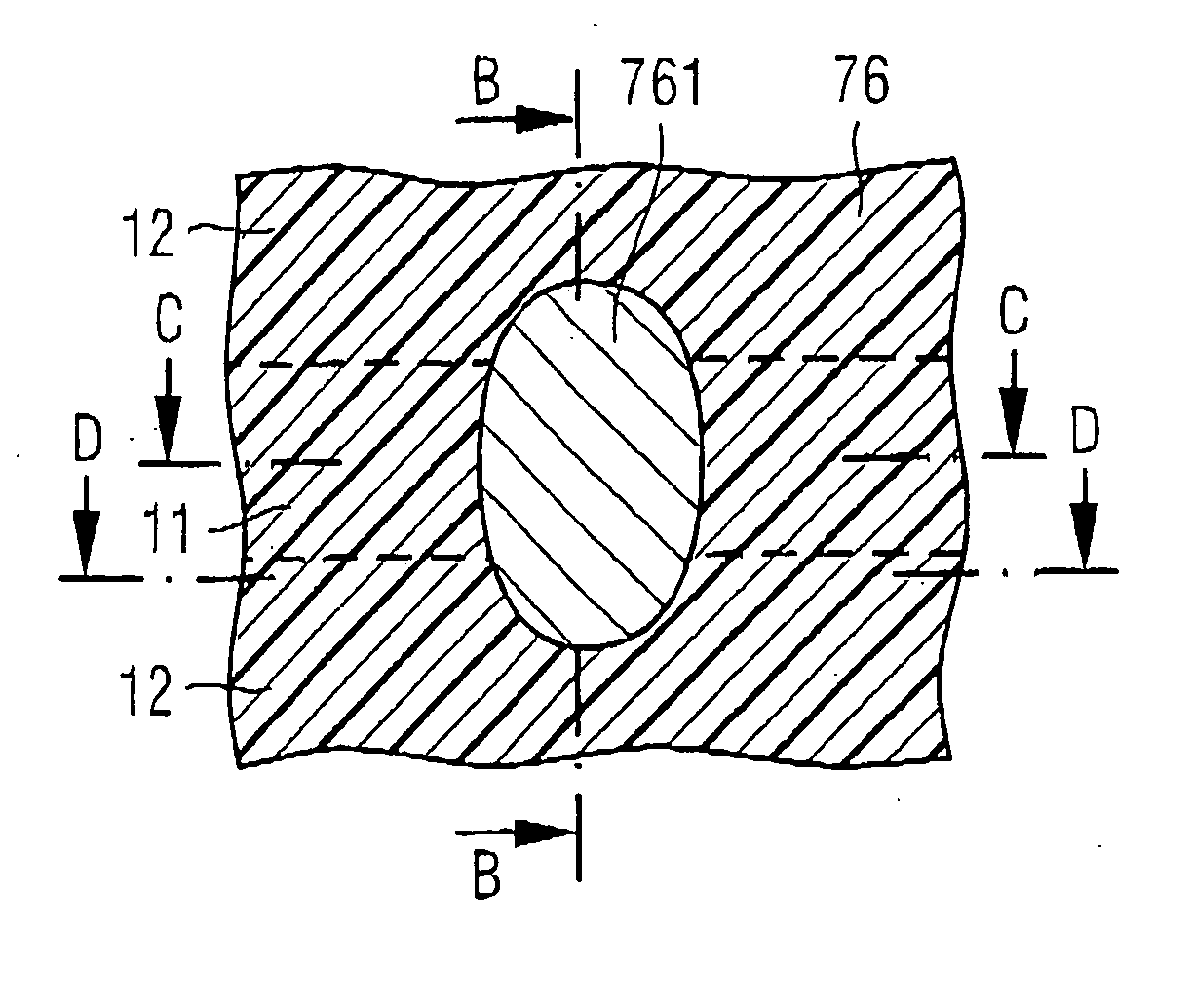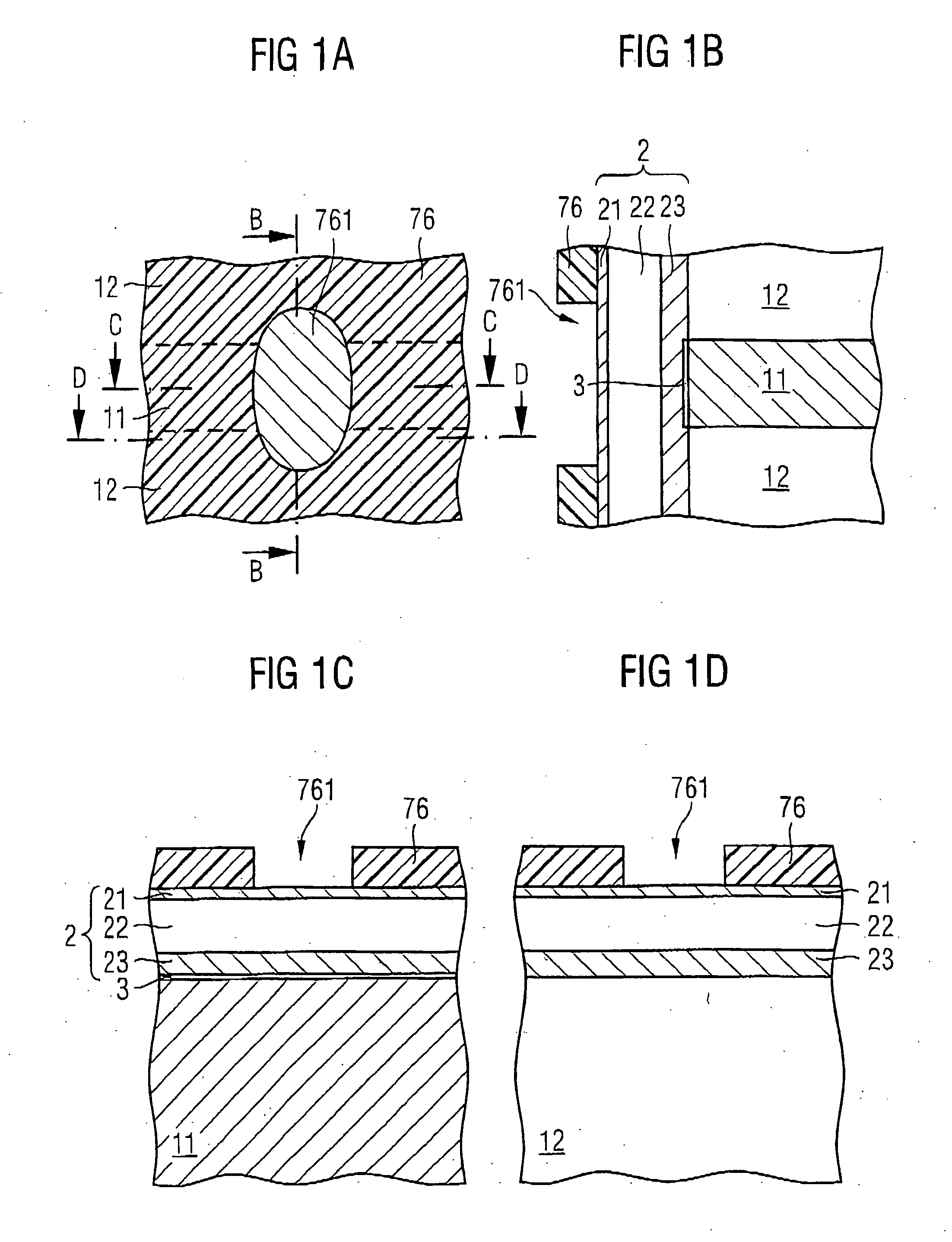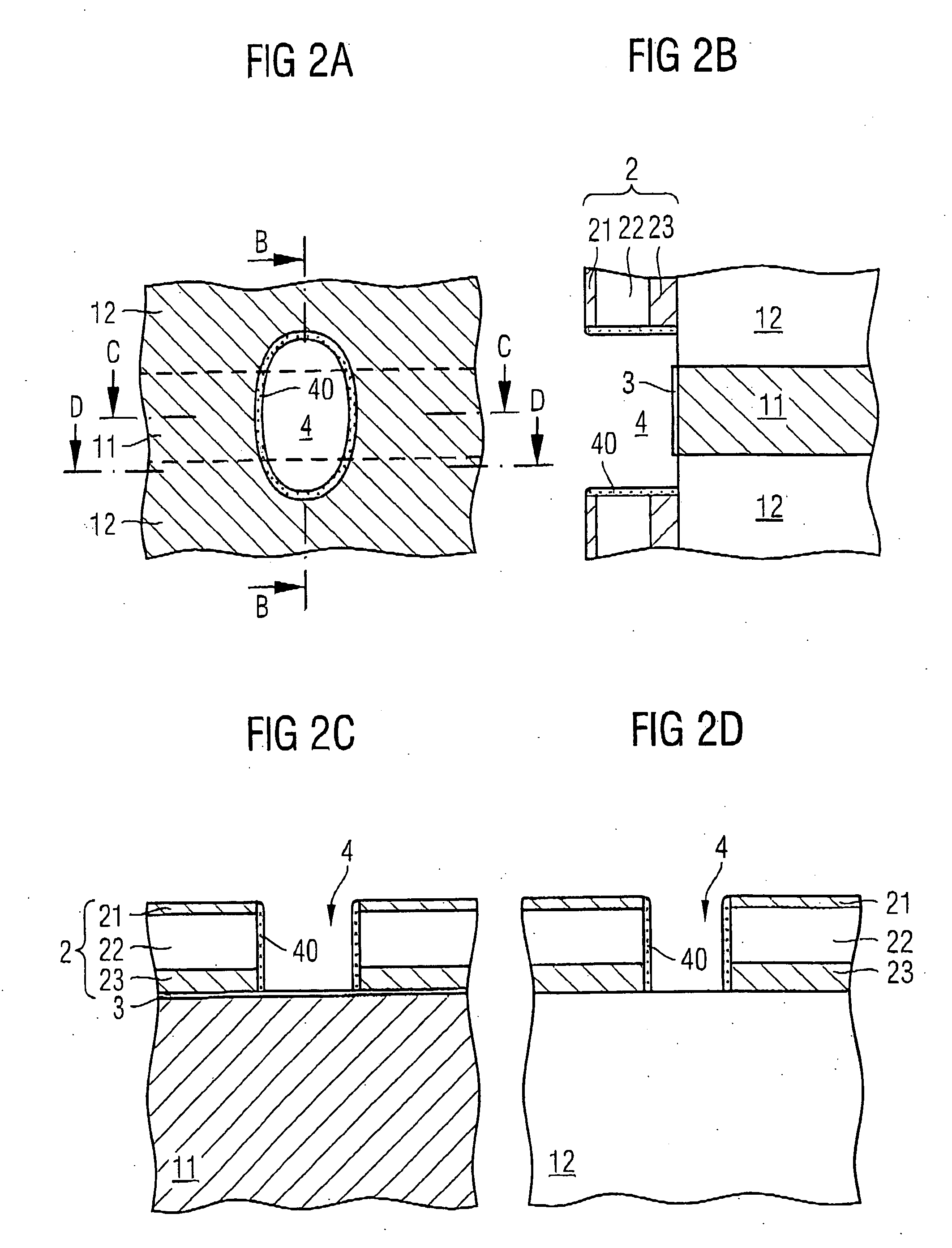Method of manufacturing a field effect transistor device with recessed channel and corner gate device
a field effect transistor and corner gate technology, which is applied in the direction of semiconductor devices, basic electric elements, electrical appliances, etc., can solve the problems of deteriorating the switching characteristics of the transistor, the polysilicon-polysilicon interface disadvantageously deteriorating the electrical resistance of the gate electrode structure, and the planar field effect transistor not scaling well to sub 100 nanometer technologies
- Summary
- Abstract
- Description
- Claims
- Application Information
AI Technical Summary
Benefits of technology
Problems solved by technology
Method used
Image
Examples
Embodiment Construction
[0041] Referring to FIGS. 1A through 11D, a process of fabricating a recess channel array transistor with corner gate device according to an exemplary embodiment of the invention is shown via plan views and corresponding cross-sectional views, respectively. A semiconductor substrate 1 is provided, which is preferably made of a semiconductor material such as single crystalline silicon. In the semiconductor substrate 1, parallel isolation trenches are formed by photolithographic techniques, wherein a stripe-shaped semiconductor fin 11 with two parallel long sides is formed between the isolation trenches. The isolation trenches are filled with a dielectric material, preferably silicon oxide, such that shallow trench isolations (STI) 12 are formed in the isolation trenches. The shallow trench isolations 12 extend on both long sides of the semiconductor fin 11. A sacrificial oxide 3 covers an upper pattern surface 10 of semiconductor fin 11. The sacrificial oxide 3 may result from a gate...
PUM
 Login to View More
Login to View More Abstract
Description
Claims
Application Information
 Login to View More
Login to View More - R&D
- Intellectual Property
- Life Sciences
- Materials
- Tech Scout
- Unparalleled Data Quality
- Higher Quality Content
- 60% Fewer Hallucinations
Browse by: Latest US Patents, China's latest patents, Technical Efficacy Thesaurus, Application Domain, Technology Topic, Popular Technical Reports.
© 2025 PatSnap. All rights reserved.Legal|Privacy policy|Modern Slavery Act Transparency Statement|Sitemap|About US| Contact US: help@patsnap.com



